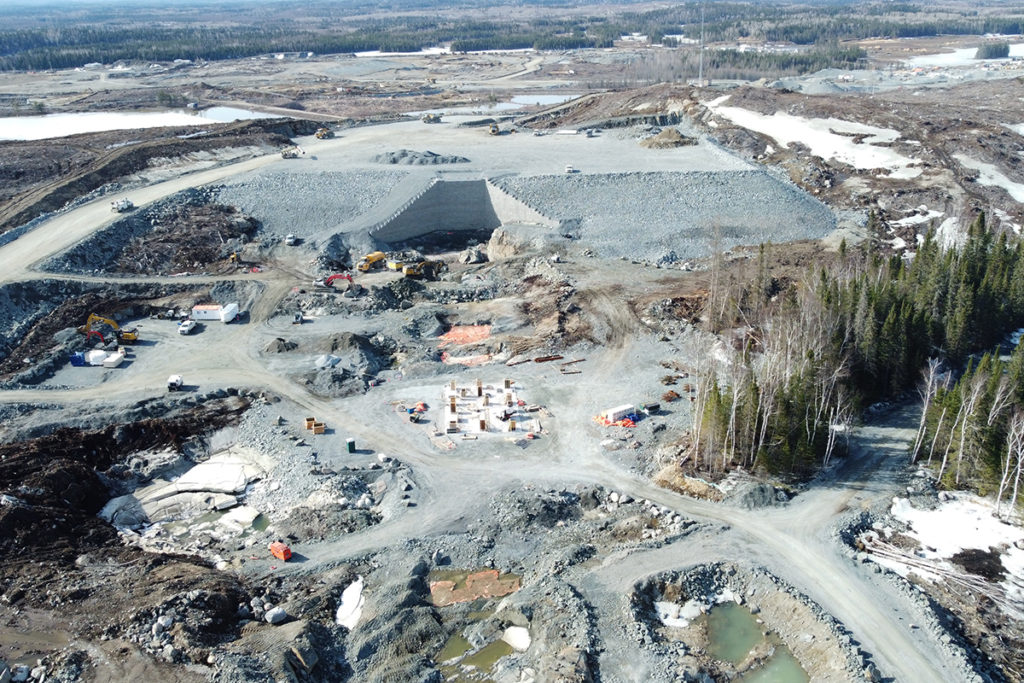Young said the delay was “typical” for commissioning, citing modifications made as rock was put into the crushing and grinding facilities.
“You just want to make sure they get all that right,” he said.
Magino is expected to produce between 72,000 and 81,000 oz. of gold in 2023 at cash costs of US$850 to US$950 per oz., and about 148,000 oz. of gold at a cash cost of $868 per oz. in 2024, its first full year of production. Its mine life is pegged at 19 years.
Its Mexican gold-silver mines however, have shorter lives. La Colorado in Sonora state, which Argonaut acquired in 2011 will reach its end in 2027. El Castillo (acquired in 2009), and San Agustin (acquired in 2013) – both in Durango – will wrap up in 2023 and 2024, respectively.
Magino hosts proven and probable reserves of 63.3 million tonnes grading 1.16 grams gold per tonne for 2.4 million oz. gold, according to a resource update in March. Measured and indicated resources total 150.8 million tonnes grading 0.94 gram gold per tonne for 4.5 million ounces, inclusive of reserves.
Argonaut is now focused on reviewing mill optimization, for which it hired Ausenco Engineering to do a debottlenecking study.
It’s also conducting an expansion plan consisting of a second ball mill and gyratory crusher to raise daily throughput from the current 10,000-tonne per day nameplate capacity to between 17,000 and 20,000 tonnes per day. Argonaut expects the expansion will be completed in 2026.
“At 20,000-tpd, [the] reserve grade results in about 250,000 oz. of gold per year,” Young said, adding Ausenco’s initial estimate for the expansion is about US$75 million ($101.2 million).
The company is also working on a 12 to 15-month exploration and reserve development program to enhance its geological understanding of the target’s historic results and convert 750,000 oz. of measured and indicated resources and 250,000 tonnes of inferred resources into proven and probable reserves.
“[We want to take] advantage of some of the work that our neighbours have done at Island Gold next door to see how their program has progressed and see whether or not we can glean anything from their program at depth,” Young said.
The Island mine, owned by Alamos Gold (TSX: AGI; NYSE: AGI) is located just east of Magino and hosts 4.2 million proven and probable tonnes grading 10.8 grams gold per tonne for 1.5 million oz. contained metal, with a mine life of 17 years.
Through its expansion plan, it aims to become the lowest-cost producer in Canada within three years, targeting US$576 per oz. in all-in sustaining costs, doubling milling capacity to 2,400 tonnes per day and more than doubling annual production to 287,000 ounces.
Looking towards 2024, Young said Magino could become one of the 10 largest and lowest cost gold operations in Canada.
“It’s a unique opportunity to own one of those mines not owned by a senior,” he said. “We believe that ultimately, we’ll have 4-million-plus ounces in reserve open pit, [and] a mill expansion. And so, the value of the…asset might be close to double that.”
Argonaut is looking to sell all its assets in Mexico, which since 2009 have been its production mainstay. Those operations include the exploration stage Cerro del Gallo project in Guanajuato state.
Argonaut sold its development stage gold-silver Ana Paula project in Guerrero state to Heliostar Metals (TSXV: HSTR) for US$30 million in cash and shares, in December 2022.
“The [Mexican] assets now are higher cost, mature and have shorter mine lives,” Young said. “They don’t fit in with our overall goal of being a low-cost mid-tier gold producer with long life assets. Those assets may be better off in someone else’s hands and the proceeds from a sale would allow us to strengthen our balance sheet which I think shareholders will be very supportive of.”
Young said assessments of Argonaut’s asset base and their costs revealed more growth potential at Magino and the Florida Canyon mine in Nevada.
He declined to give a price estimate for the Mexican assets, but said the company would begin exploring sales in the fourth quarter.
“I think we’re going to be realistic with this and do the right thing by our employees,” he said. “Our focus is to put the assets in the right hands. We’re looking for companies and management groups that share our values and have the balance sheet to execute and continue to operate these assets.”
Argonaut’s change of heart on the Mexican projects comes several months after the government of President Andres Manuel Lopez Obrador passed a set of contentious mining laws that critics say will deter investment and harm the country’s mining industry. Under the new reforms, juniors will face a tougher process to obtain mining concessions, which will also be granted through public auctions, and the concessions have been shortened to 30 years from 50 years.
Argonaut didn’t respond to questions as to whether those laws influenced the company’s decision to review its Mexican operations.
Long, windy road
Argonaut’s path to production at Magino has at times been winding and rough.
It acquired Magino in 2012, and began building the mine in 2020, when development costs were pegged around $510 million. Capex would rise three more times until 2023, including in December 2021, prompting the ouster of Argonaut’s founder, president and CEO Peter Dougherty.
In June 2022, Argonaut closed an offering of 434 million common shares at 45¢ apiece, giving it gross cash of $195.3 million for financing construction at Magino. It also inked a US$250-million debt financing agreement with a syndicate of lenders to help it refinance its existing debt and pay for Magino’s development and expansion.
The final estimate for Magino now sits at $980 million, according to Argonaut’s first quarter financial results, in May. But Young said he doesn’t expect costs to rise again.
“The project is done now,” he said. “There’s a few pieces of infrastructure that are still outstanding, but the project is up and running. And so that capital inflation risk is now behind us.”
Following a recent tour of Magino, BMO Capital Markets gold analyst Brian Quast said in a note on Sept. 10 that most metrics at the mine are positive even though many issues require attention as the mine progresses through commissioning.
Staffing is also a challenge. One truck wasn’t operating because of a lack of trained drivers. Quast said management noted there are around 70 open positions at Magino, despite efforts to upskill workers and attract more talent.
Argonaut shares traded at 53¢ in Toronto on Friday, giving the company a market capitalization of $458.1 million. Its shares traded in a 52-week range of 32¢ and 77¢.




